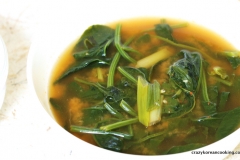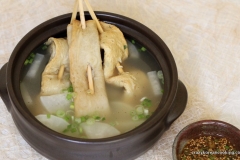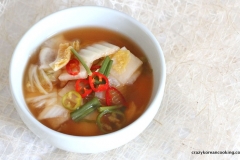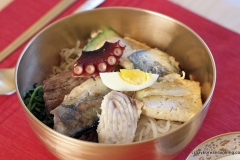Kelp (dried, 2" X 2" or 5 cm x 5 cm) 다시마
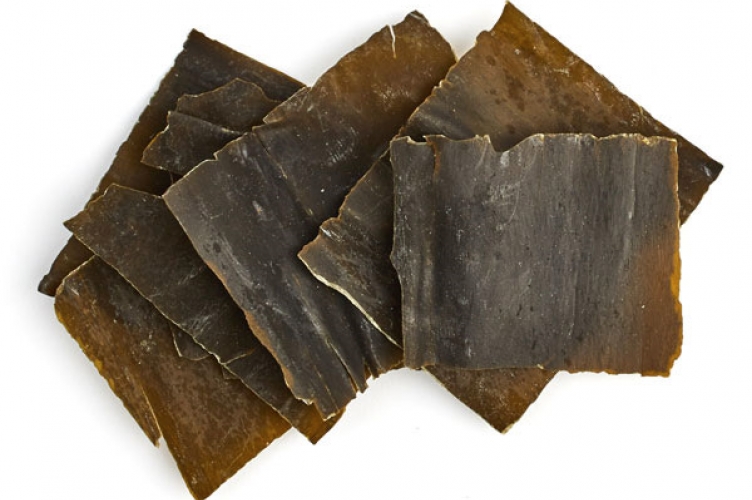
Kelp is one of the most frequently used sea vegetables in Korean cuisine. It is known as healthy food since it contains a significant amount of alginic acid, which prevents fat absorption and decreases sodium level in your body. Rich in dietary fiber, it also helps to prevent constipation. Dried kelp (also known as kombu) is usually used with dried anchovies to flavour the broth. Koreans also eat raw kelp as a side dish with sweet & sour red chili paste sauce ("chogochujang") or enjoy sweetened fried kelp ("boogak") as a snack (or side dish).
You can buy Kelp online here.
Sourcing & Selecting
Local Korean grocery market
At CrazyKoreanShopping.com
You can buy Kelp online here.
Niacin 1.10mg
Sodium 554.00mg
Protein 1.10g
Glucide 3.60g
Retinol 0.00μg
β O Carotene 774.00μg
Vitamin A 129.00μgRE
Vitamin B1 0.03mg
Vitamin B2 0.13mg
Vitamin B6 0.00mg
Vitamin C 14.00mg
Vitamin E 1.00mg
Dietary Fiber 3.18g
Zinc 2.52mg
Folic Acid 146.30μg
Phosphorus 23.00mg
Lipid 0.20g
Iron 2.40mg
Potassium 1242.00mg
Calcium 103.00mg
Cholesterol 0.00mg
Ash 3.50g
(of 100 grams of kelp)













